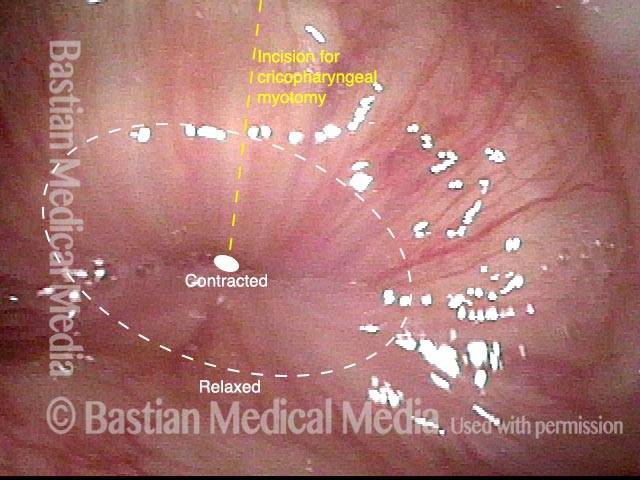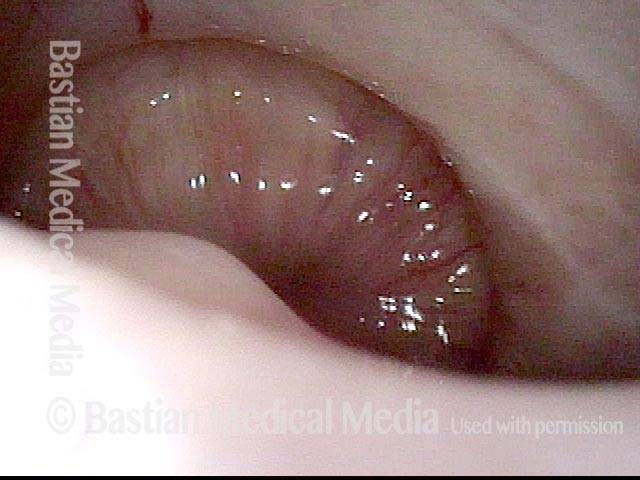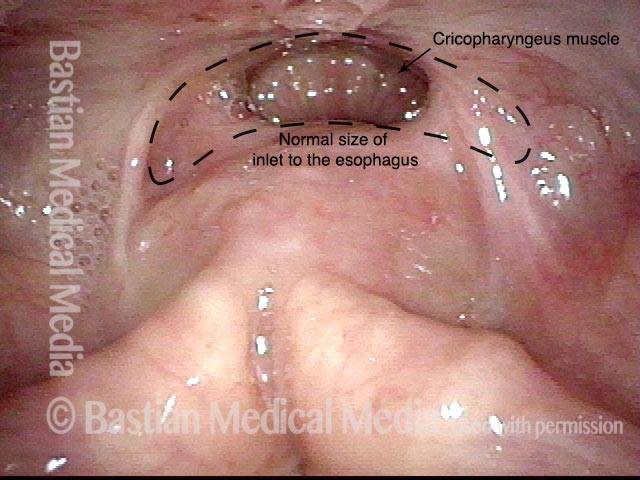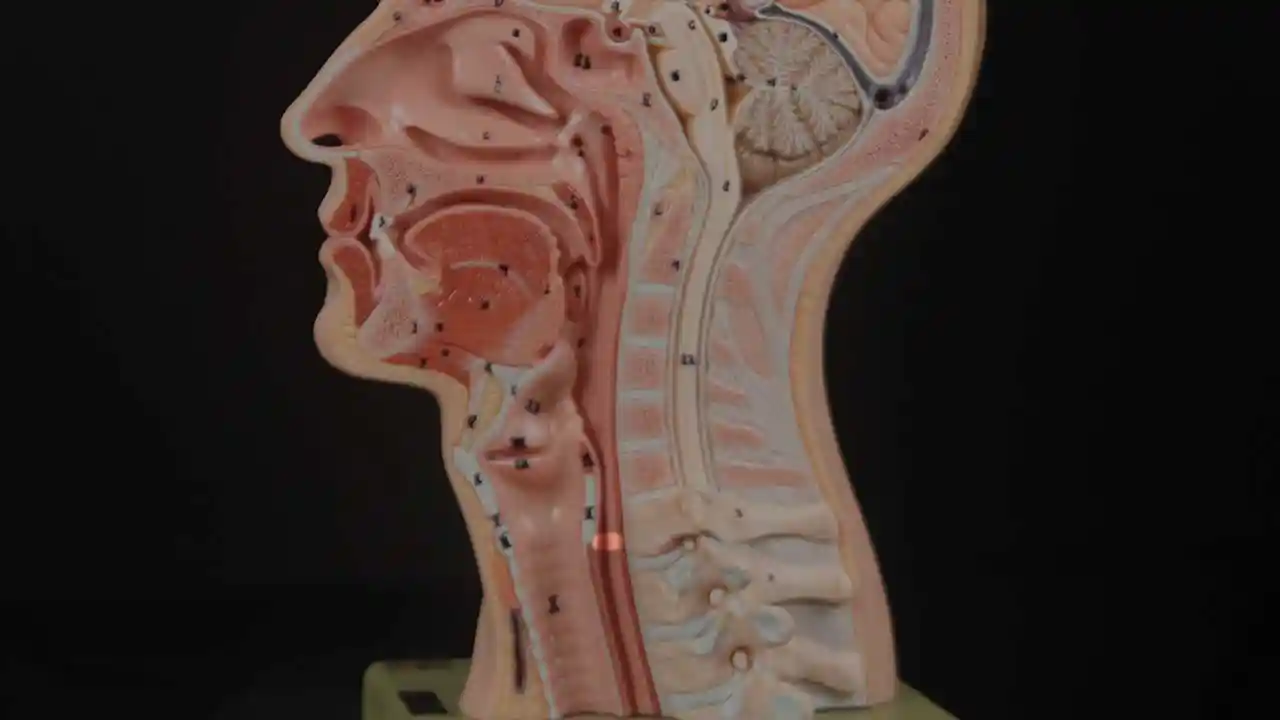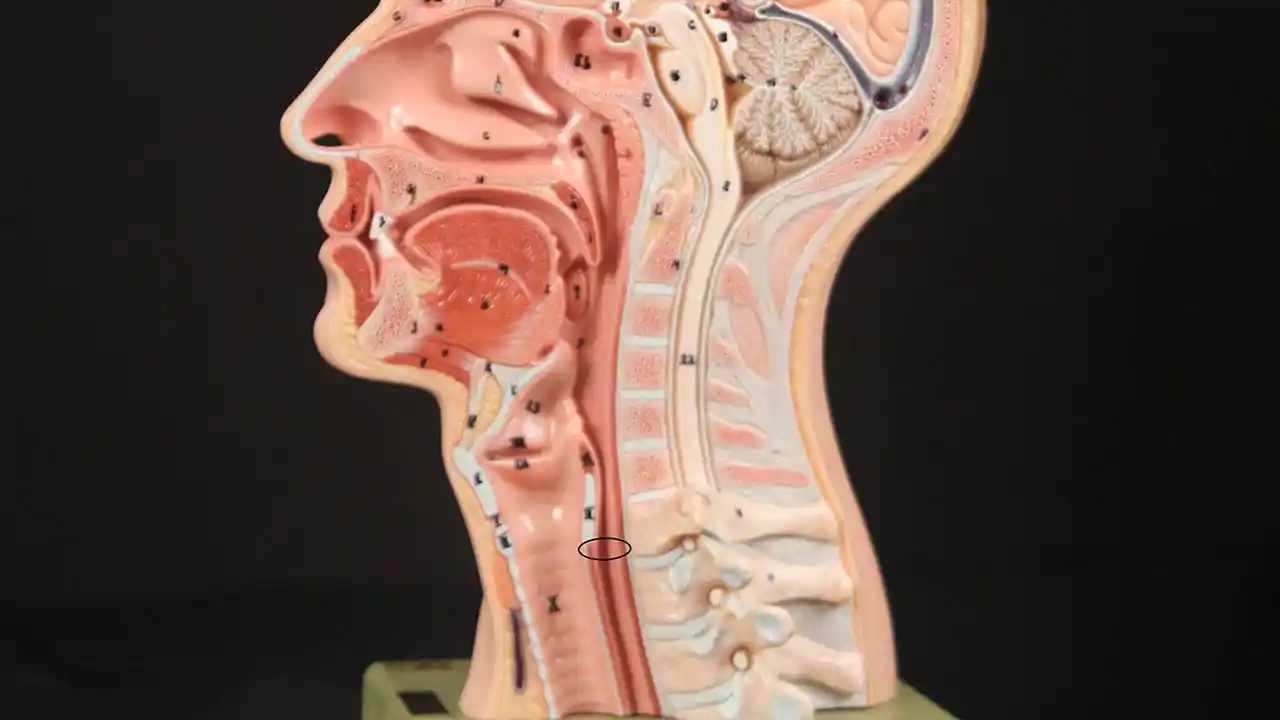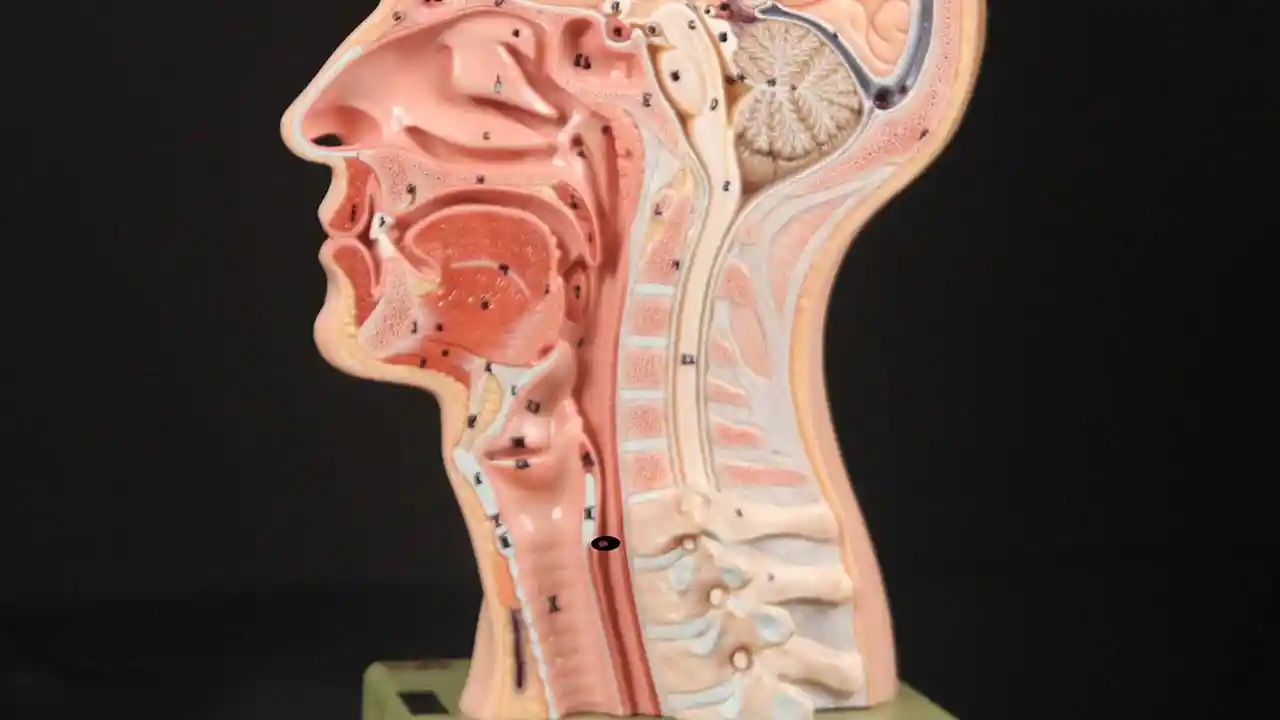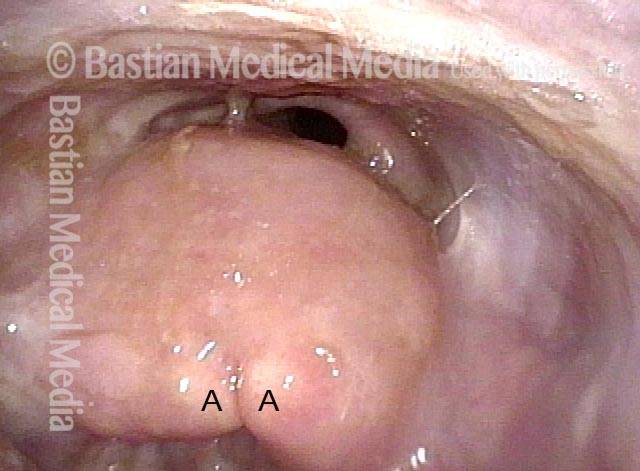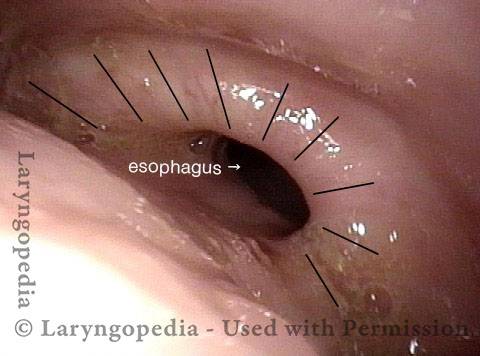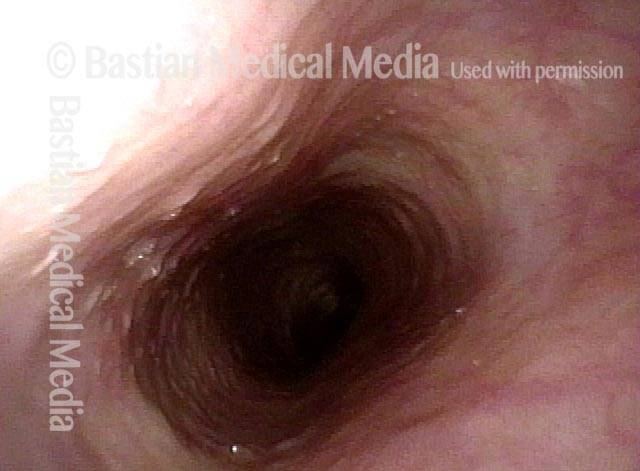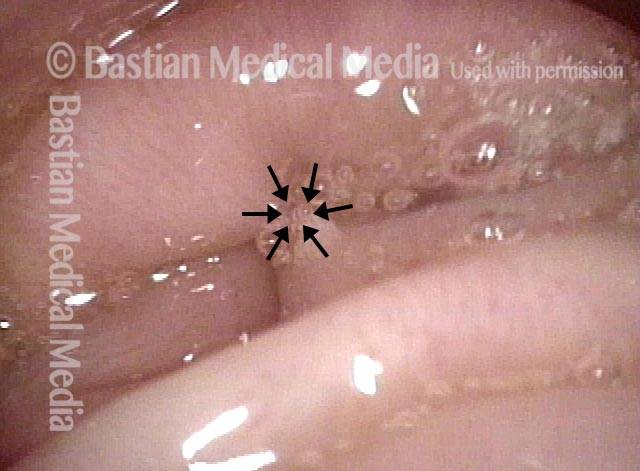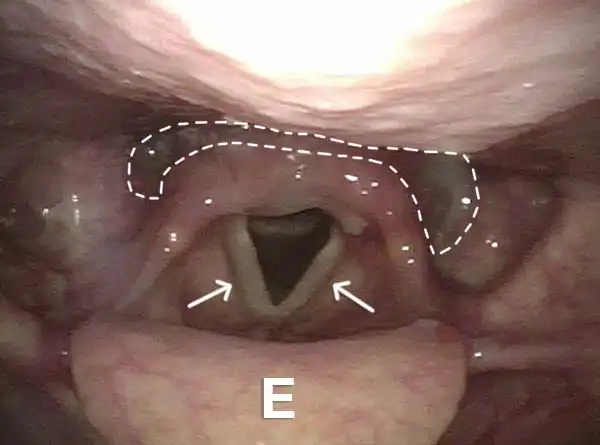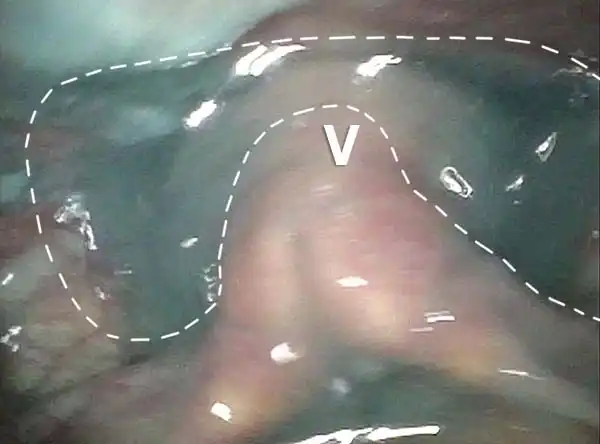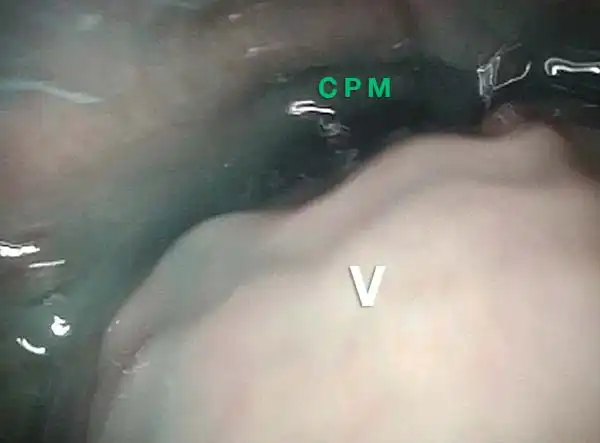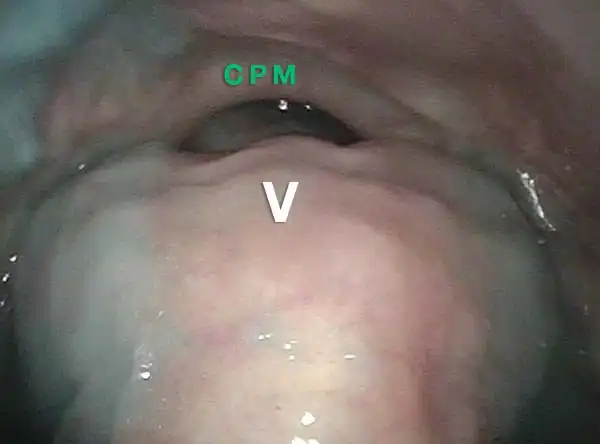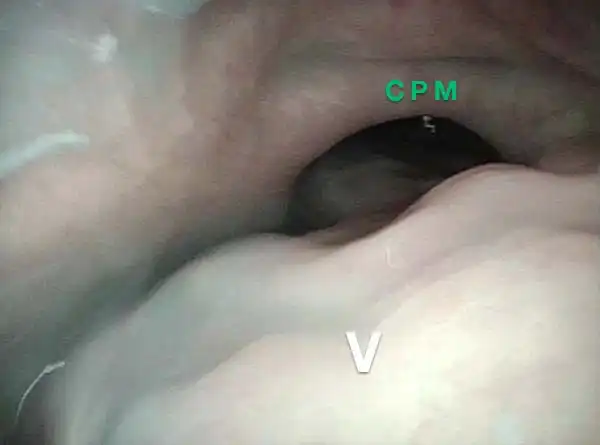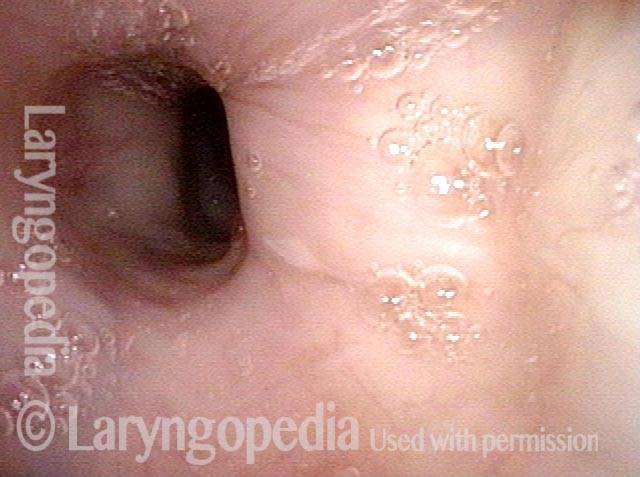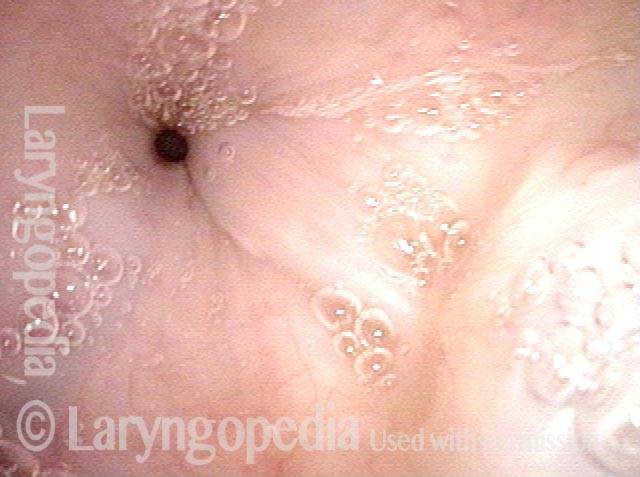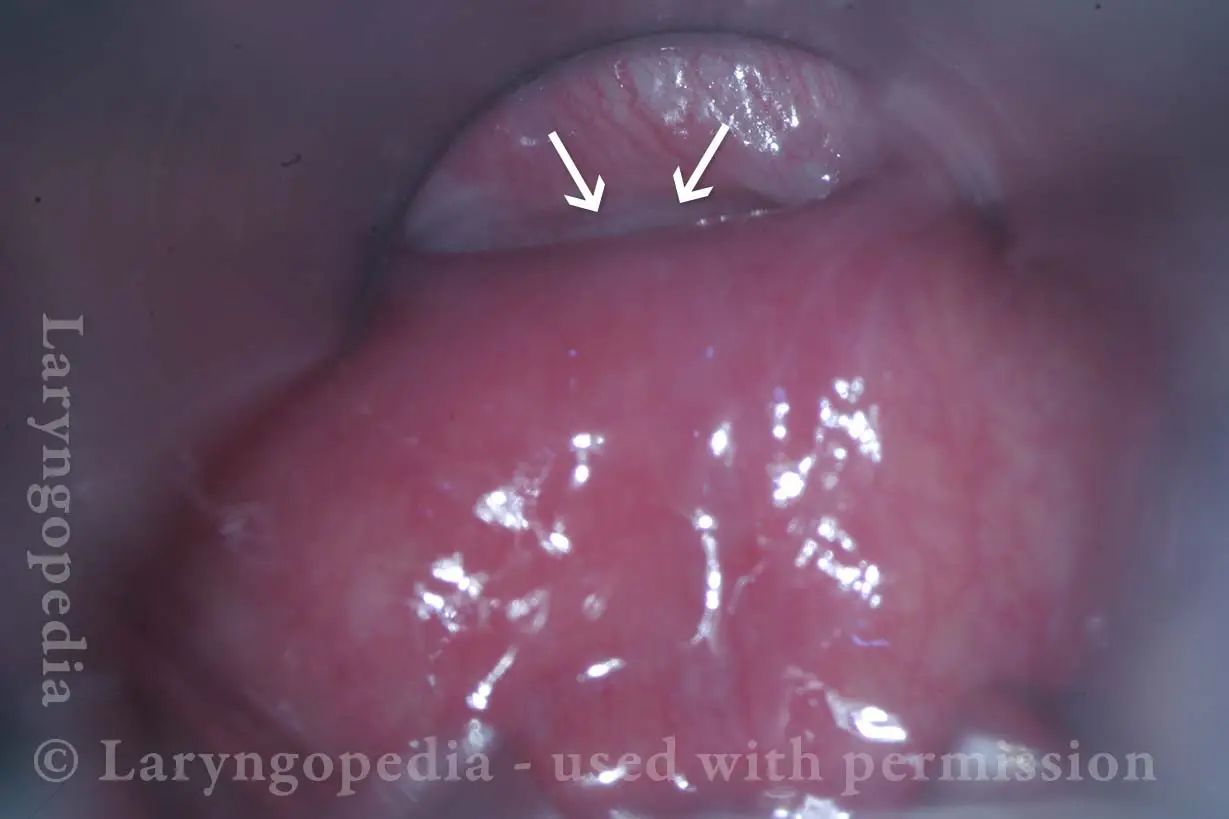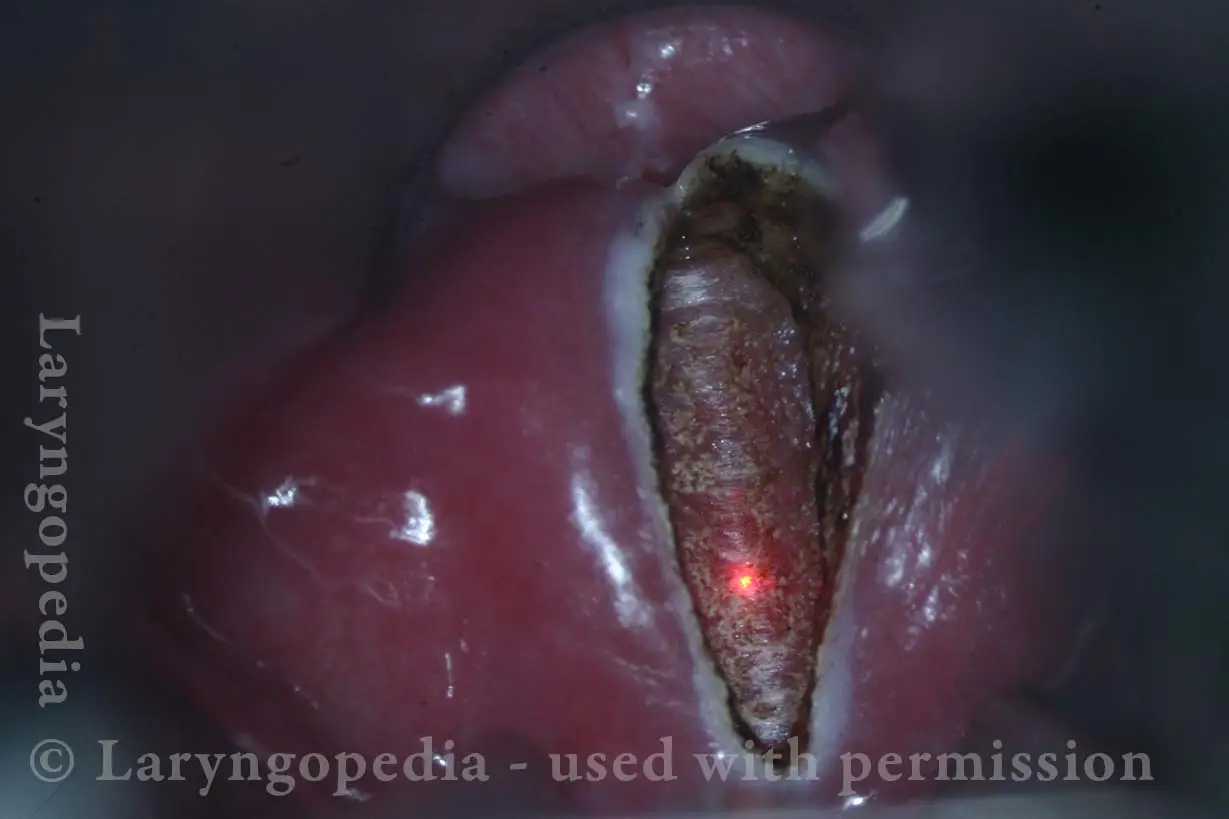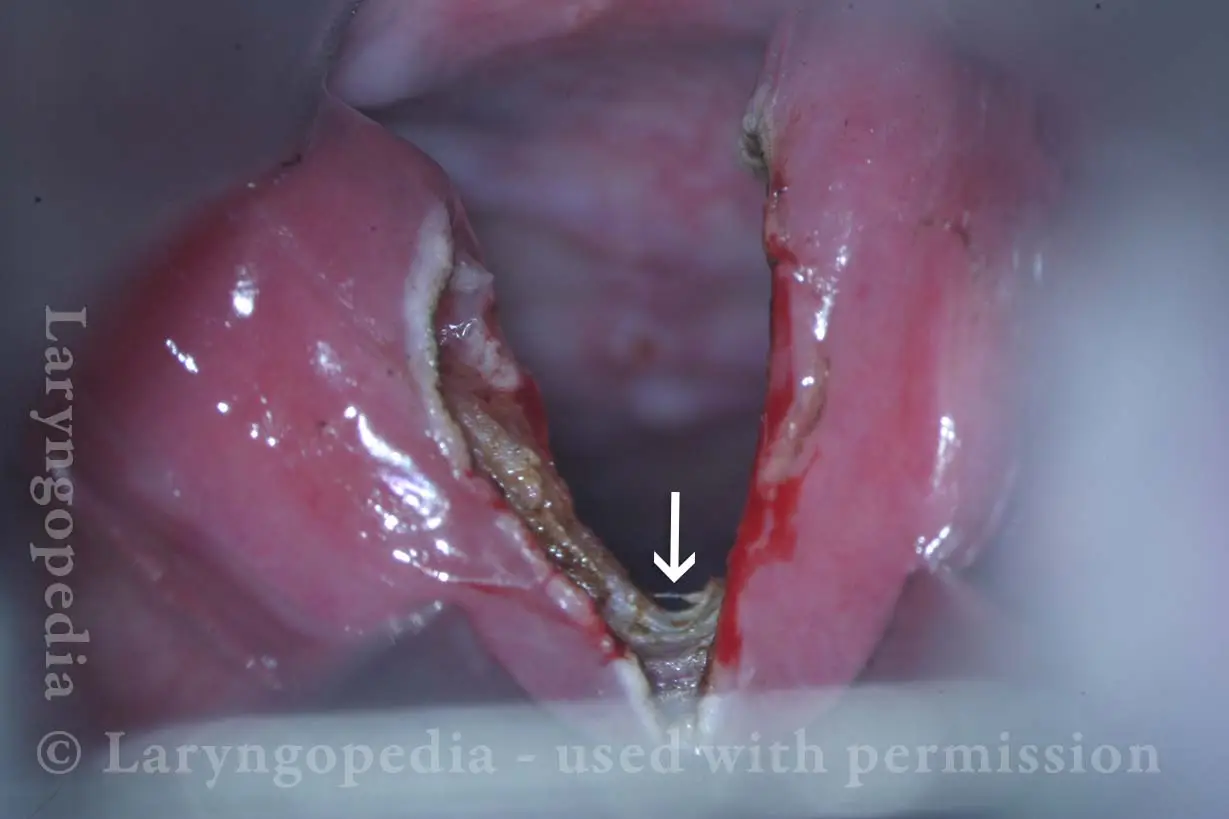Sfintere Esofageo Superiore
Lo sfintere esofageo superiore è un muscolo sfintere che circonda l’estremità superiore dell’esofago. È quasi sempre in uno stato contratto, anche durante il sonno. La sua azione è come un pugno continuamente chiuso. Questa contrazione chiude l’ingresso dell’esofago.
Ogni volta che una persona deglutisce, il muscolo cricofaringeo si rilassa momentaneamente, aprendo la presa e consentendo al cibo o al liquido di passare ed entrare nell’esofago.
Tipi di disturbi
Il muscolo è soggetto a due tipi di disturbi. La disfunzione cricofaringea è l’incapacità del muscolo di rilassarsi, che causa difficoltà di deglutizione. Lo spasmo cricofaringeo è un’ipercontrazione del muscolo, che provoca la sensazione di un nodo alla gola ma senza interferire con la deglutizione.
Lo sfintere esofageo superiore
Cricopharyngeus muscle (1 of 4)
Cricopharyngeus muscle (1 of 4)
Opening when Contracted (2 of 4)
Opening when Contracted (2 of 4)
A distant view (3 of 4)
A distant view (3 of 4)
hypopharyngeal inlet (4 of 4)
hypopharyngeal inlet (4 of 4)
Posizione dello sfintere esofageo superiore
Cricopharyngeus Muscle (1 of 3)
Cricopharyngeus Muscle (1 of 3)
Open Cricopharyngeus Muscle (2 of 3)
Open Cricopharyngeus Muscle (2 of 3)
Closed (3 of 3)
Closed (3 of 3)
Manovra a tromba Rivela lo sfintere esofageo superiore
Trumpet maneuver (1 of 4)
Trumpet maneuver (1 of 4)
The “shelf” (2 of 4)
The “shelf” (2 of 4)
Cervical esophagus (3 of 4)
Cervical esophagus (3 of 4)
Closed position (4 of 4)
Closed position (4 of 4)
Sfintere esofageo superiore osservato durante la deglutizione
Questa persona ha difficoltà a deglutire a causa di una combinazione di precedenti interventi chirurgici per il cancro della lingua decenni fa e degli effetti delle radiazioni a lungo termine. I cibi solidi sono i più problematici, quindi questa sequenza mostra un tentativo di ingoiare acqua macchiata di colorante alimentare blu.
Swallowing crescent (1 of 5)
Swallowing crescent (1 of 5)
Swallowing water (2 of 5)
Swallowing water (2 of 5)
Cricopharyngeus muscle (3 of 5)
Cricopharyngeus muscle (3 of 5)
Relaxed CPM (4 of 5)
Relaxed CPM (4 of 5)
Partially open esophagus due to A-CPD (5 of 5)
Partially open esophagus due to A-CPD (5 of 5)
Come funziona uno sfintere
Open (1 of 2)
Open (1 of 2)
Contracted (2 of 2)
Contracted (2 of 2)
Disfunzione muscolare cricofaringea anterograda, prima, durante e dopo la miotomia
Non-relaxing cricopharyngeus muscle (1 of 4)
Non-relaxing cricopharyngeus muscle (1 of 4)
Opening the esophageal orifice (2 of 4)
Opening the esophageal orifice (2 of 4)
Laser cricopharyngeus myotomy (3 of 4)
Laser cricopharyngeus myotomy (3 of 4)
Cricopharyngeus myotomy nearly complete (4 of 4)
Cricopharyngeus myotomy nearly complete (4 of 4)
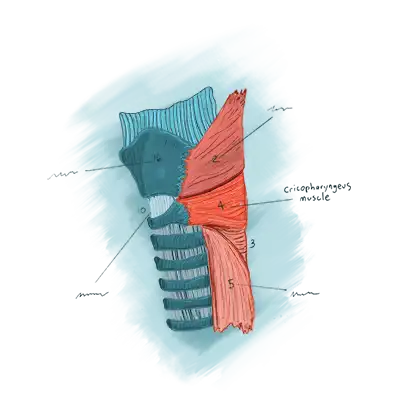
Condividi questo articolo

